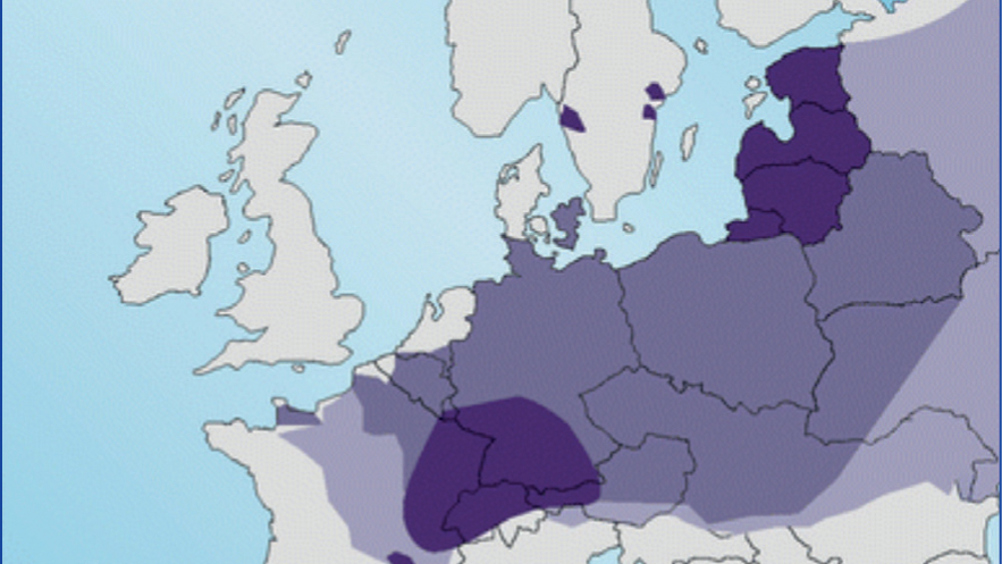Since the Pet Travel Scheme (PETS) was relaxed in 2012, pet travel has increased year on year, with 287 016 UK dogs travelling on the PETS in 2017, up from 164 836 in 2015. This increase has occurred at a time of increased human migration and climate change, providing favourable conditions for the rapid spread of parasitic diseases and their vectors. This makes effective parasite prevention advice for travelling pets based on the most recent parasite distributions vital to keep pets and owners safe, while also minimising risk to national biosecurity. It is the role of Official Veterinarians (OVs) to issue pet passports and ensure legal requirements are met, but veterinary nurses also play a vital role in pet travel clinics, risk assessment and ensuring all parasite protection needs are covered. Some of the parasites encountered abroad will be ‘the usual suspects’ forming the core of pet travel advice and will be familiar to UK veterinary surgeons and nurses involved with pet travel clinics. In addition however, new parasites are also emerging which will be less familiar to most with potentially fewer licensed preventative products. All of these threats in combination must be considered when giving best practice pet travel advice.
The tapeworm Echinococcus multilocularis, Dirofilaria immitis (heartworm), Leishmania infantum, and tick-borne pathogens form the basis of pet travel parasite control advice due to their pathogenicity or zoonotic risk, wide range of distribution and effective licensed products for their prevention.
Echinococcus multilocularis
Echinococcus multilocularis, the cause of cystic echinococcosis, is a severe zoonosis and considered a neglected disease by the World Health Organisation. The adult tapeworm is carried by both foxes and domestic dogs with foxes acting as a reservoir of infection and small rodents such as microtine voles acting as intermediate hosts. Dogs and foxes become infected by predation of these voles, with infection in dogs bringing the parasite into close proximity to people. Cats can also act as definitive hosts but have a lower worm burden producing fewer eggs than canids. The last two decades has seen increased disease incidence in France, Germany, Austria and Switzerland as well as a dramatic increase in the Baltic States. The disease has also become established in the Jutland peninsula of Denmark, Sweden, Norway and the north-western coast of France (Figure 1). Now, only the UK, Ireland, Malta, Finland and Norway have endemic free status in Europe.
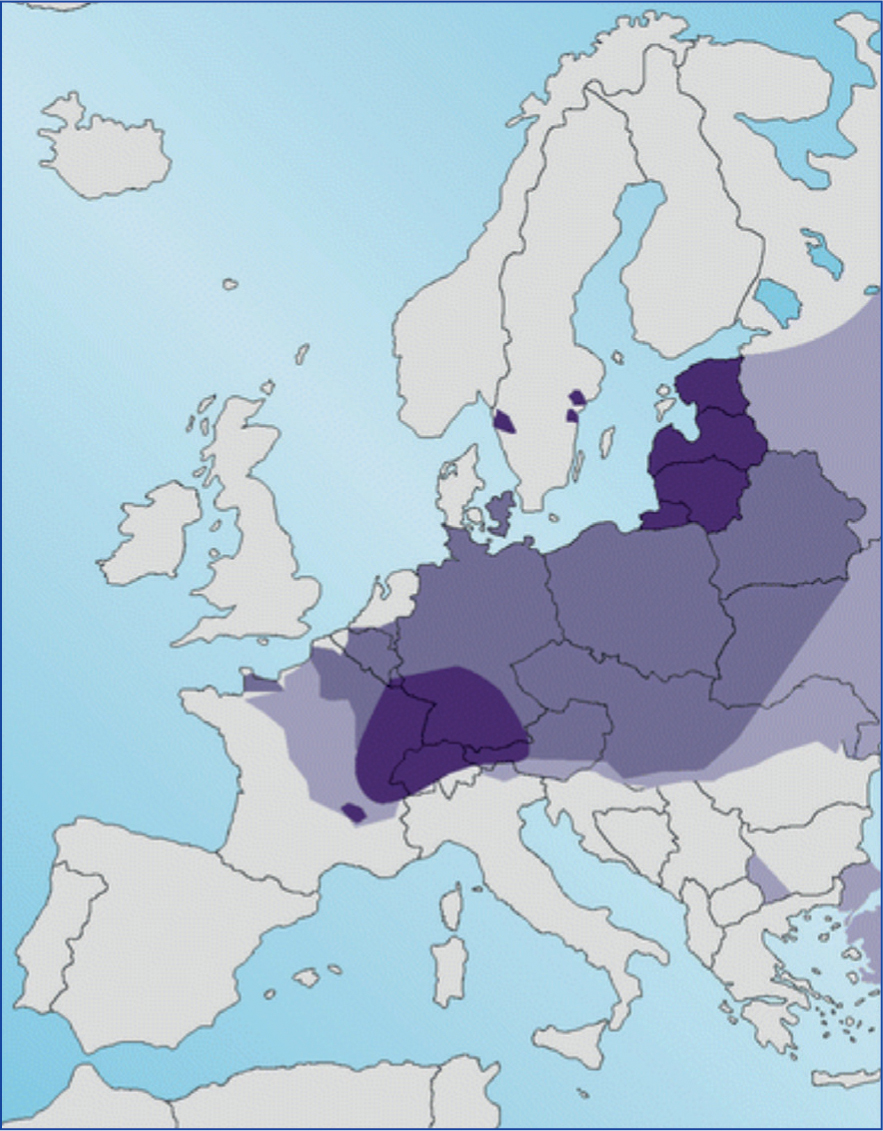
Health risk to dogs
E. multilocularis infections in dogs are almost always sub-clinical even when heavy worm burdens are present and is of no clinical significance in infected pets.
Zoonotic significance
Zoonotic infection occurs through ingestion of eggs passed in the faeces of dogs and foxes. Eggs are immediately infective when passed so ingestion can occur though association with infected dogs, environmental contamination through dog fouling, or though eating contaminated fruit and vegetables intended for raw consumption. Zoonotic infection results in local and metastatic spread of cysts in a similar fashion to a malignant tumour, leading to hepatopathy and potential multiple organ involvement. Despite significant advances in treatment over the past two decades, infected individuals can still expect a significant reduction in life expectancy. Although E. multilocularis is not currently endemic in the UK, the increase in pet travel across UK borders, the relaxation in the time period allowed between tapeworm treatment and return to the UK, and the spread of the parasite across Europe potentially threatens this status. If E. multilocularis is allowed entry into the UK, the large fox and microtine vole population will make prevention of E. multilocularis becoming endemic difficult if not impossible to achieve (Deplazes et al, 2003). It is therefore vital that the opportunity for the parasite to gain entry to the UK is kept to a minimum.
Prevention advice
Praziquantel is highly effective at eliminating the adult parasite and preventative treatment with praziquantel remains the mainstay of control. The PETS currently still requires dogs to be treated with praziquantel between 1 and 5 days before entry to the UK. This simple treatment has prevented endemic foci from developing and remains vital. It does however, allow a window of opportunity for infection. The half life of praziquantel is 1–3 hours so infection may occur in the 5 day window between compulsory treatment and entry into the UK. Clients should therefore be advised to give dogs an additional praziquantel treatment within 30 days after entry into the UK. Cases of infection in cats are uncommon but have been reported so these should also be treated. The prepatent period of E. multilocularis is at least 30 days so dogs travelling abroad for more than 30 days should be treated monthly with praziquantel to help keep pet owners safe from infection while abroad. People can also reduce the risk of infection to themselves by washing fruit and vegetables intended for raw consumption. Good hand hygiene will also help to limit zoonotic risk.
Dirofilaria immitis (heartworm)
D. immitis is a heartworm of canids but also can infect ferrets and felines. Transmission occurs through feeding by infected mosquitoes. It is endemic throughout Southern Europe And has now also spread into Eastern European countries such as Romania and Bulgaria (Figure 2). Although the mosquito vector is endemic in most European countries, including the UK, a colder climate in Northern Europe has prevented heartworm from becoming endemic. This is because the adult mosquito does not live long enough in colder climates for heartworm to complete its lifecycle. Climate change however, means this is likely to change and allow further expansion of the parasite's range northwards in Europe over time.
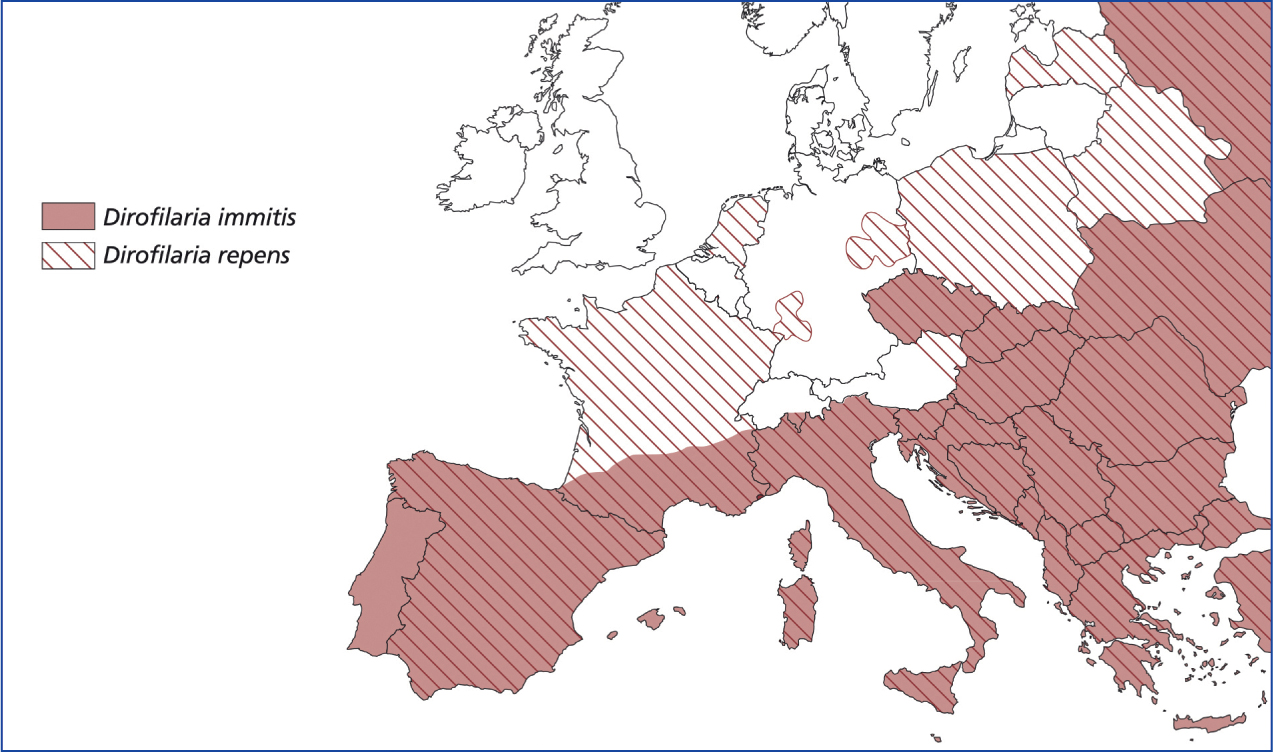
Health risk to pets
D. immitis is a significant cause of potentially fatal heart disease in infected pets. It is also a cause of chronic bronchitis, especially in cats.
Zoonotic significance
Exposure of people to bites by infected mosquitoes in endemic countries can lead to aberrant migration and development of benign lung nodules. These can be initially mistaken for malignant lung masses but otherwise have little human clinical significance.
Prevention
Heartworm is highly pathogenic and also very difficult to treat in infected pets. Preventative treatment for pets travelling to endemic countries is therefore essential. Licensed macrocylic lactones (moxidectin in ferrets, milbemycin, moxidectin and selamectin in cats and dogs, eprinomectin in cats) are highly effective as a preventative treatment and should be used monthly until at least 1 month after the pet's return to the UK. Use of a licensed fly repellent (Advantix®, Bayer; Scalibor®, MSD Animal Health; Vectra 3D®, Ceva) in dogs and avoiding walking at peak mosquito feeding times will act as a useful second line of defence but should not be relied on alone as none of these strategies are 100% effective at preventing mosquitoes from biting.
Leishmania infantum
Leishmaniosis is caused by intracellular protozoan parasites of the genus Leishmania, with Leishmania infantum being the predominant species affecting cats and dogs in Europe. It has zoonotic potential and is a significant endemic zoonosis in Southern Europe. Transmission occurs primarily through bites from infected phlebotomine sandflies but can also occur through blood transfusion, congenitally and venereally. Although small foci of Leishmania can be maintained by other forms of transmission, the distribution of L. infantum is largely dependent on its sandfly vector, currently limiting the European distribution of the parasite to the south of France and Southern Europe. The parasite seasonally expands its rage into central France so this needs to be considered when giving preventative advice. Two recent cases of leishmaniosis in dogs that had not travelled outside the UK (Duthie and Peterson, 2019) suggest the potential for horizontal transmission in the absence of the sandfly vector, so there should not be complacency about the possibility of L. infantum establishing in the UK.
Health risk to pets
Leishmaniosis is chronic in nature with a variety of presentations and periods of remission. Signs are immune-mediated in nature and can be cutaneous, mucosal or visceral. Dermatological signs include alopecia, hyperkeratosis, dermatitis and dermal ulcers. Visceral signs can include hepatopathy, splenomegaly and renal compromise. Polyarthritis, ocular inclusion bodies and uveitis can also occur due to the formation of immune complexes. Infection is lifelong and long-term prognosis poor if renal complications and proteinuria progress.
Zoonotic significance
Human cases of leishmaniosis occur in endemic countries due to infected sandfly bites and can be visceral or cutaneous in nature. The risk that infected dogs and cats pose to people in countries free of sandflies is minimal however and there has never been a recorded case worldwide of an immune-competent person being infected directly by an infected cat or dog. Direct transmission via open sores or wounds is theoretically possible though and good hygiene including thorough hand sanitation around infected pets should be advised.
Prevention
Preventative measures are essential for pets travelling to endemic countries. Sandflies feed at night with the greatest activity at dawn and dusk so avoiding outdoor activity at these times helps to prevent exposure. They are also poor flyers so sleeping with pets upstairs at night is advantageous. If camping outdoors, then breezy high locations are desirable. Fine mesh insecticide impregnated bed nets also offer some protection although any products containing pyrethroids should be avoided in cats. Even if all these preventative measures are used however, some exposure to bites is likely so the use of insecticides with ‘knock down’ capabilities to prevent flies from biting is required. Pyrethroids are the drug class of choice for fly knock down and licensed preparations are available for dogs in the UK (Advantix®, Scalibor®, Vectra 3D®). Seresto® (Bayer) collar is licensed for the reduction of transmission of Leishmania in dogs although not for fly repellency specifically. Although not licensed for this purpose, Seresto® collar provides useful fly repellent efficacy in cats, where products containing other pyrethroids are not an option. Treatment should be applied 1 week before travel as pyrethroids take time to reach full distribution and activity.
Vaccines against leishmaniosis are also now available. CaniLeish® (Virbac) and Letifend (MSD Animal Health) promote a Th1 cell-mediated response to help protect against disease. The aim of the vaccines is to reduce the risk of disease rather than infection, so vaccination should be considered as an additional layer of protection for dogs visiting highly endemic areas or spending long periods of time in endemic countries. It is not a replacement for a licensed fly repellent product which should always be recommended. Serological diagnostic testing is recommended in dogs that have travelled abroad before vaccination to ensure they are not already infected. Speedleish K® (Virbac) is a highly sensitive patientside serological test which is designed for this purpose.
Tick-borne diseases
Pets travelling abroad may be exposed to ticks and tick-borne pathogens not endemic in the UK. The whole of Europe is endemic for at least one of the main three tick vectors, Ixodes spp., Dermacentor reticulatus and Rhipicephalus sanguineus.
Health risk to pets
A variety of tick-borne pathogens can be transmitted to pets while abroad leading to both acute and chronic disease. Infection is often lifelong and the impact on long-term health considerable. Clinical signs associated with tickborne disease include:
- Anaemia and thrombocytopenia — Babesia spp. infection can lead to immune-mediated haemolytic anaemia in dogs with subsequent regenerative anaemias developing. These most commonly are acute and typically present as pale mucous membranes, icterus, fever and hepato-splenomegaly. Associated depression and anorexia may be present, as well as dark brown urine associate with haemoglobinuria (Figure 3). Concurrent thrombocytopenia may be present with petaechiation on the gums. Anaplasma platys is a cause of cyclic thrombocytopenia in dogs so this should be considered as a differential diagnosis in travelled dogs suffering from recurrent bouts of thrombocytopenia. It is also a common sign in chronic ehrlichiosis.
- Lymphadenopathy and pyrexia — many clinical tickborne infections transmitted by R. sanguineus will present acutely with lymphadenopathy and pyrexia including Ehrlichia canis, Hepatazoon spp., A. platys and Babesia vogelli.
- Neurological signs — tick-borne encephalitis and both acute and chronic ehrlichiosis may present with signs associated with meningitis and meningoencephalitis. These include ataxia, seizures, paresis, hyperaesthesia, cranial nerve deficits and vestibular signs.
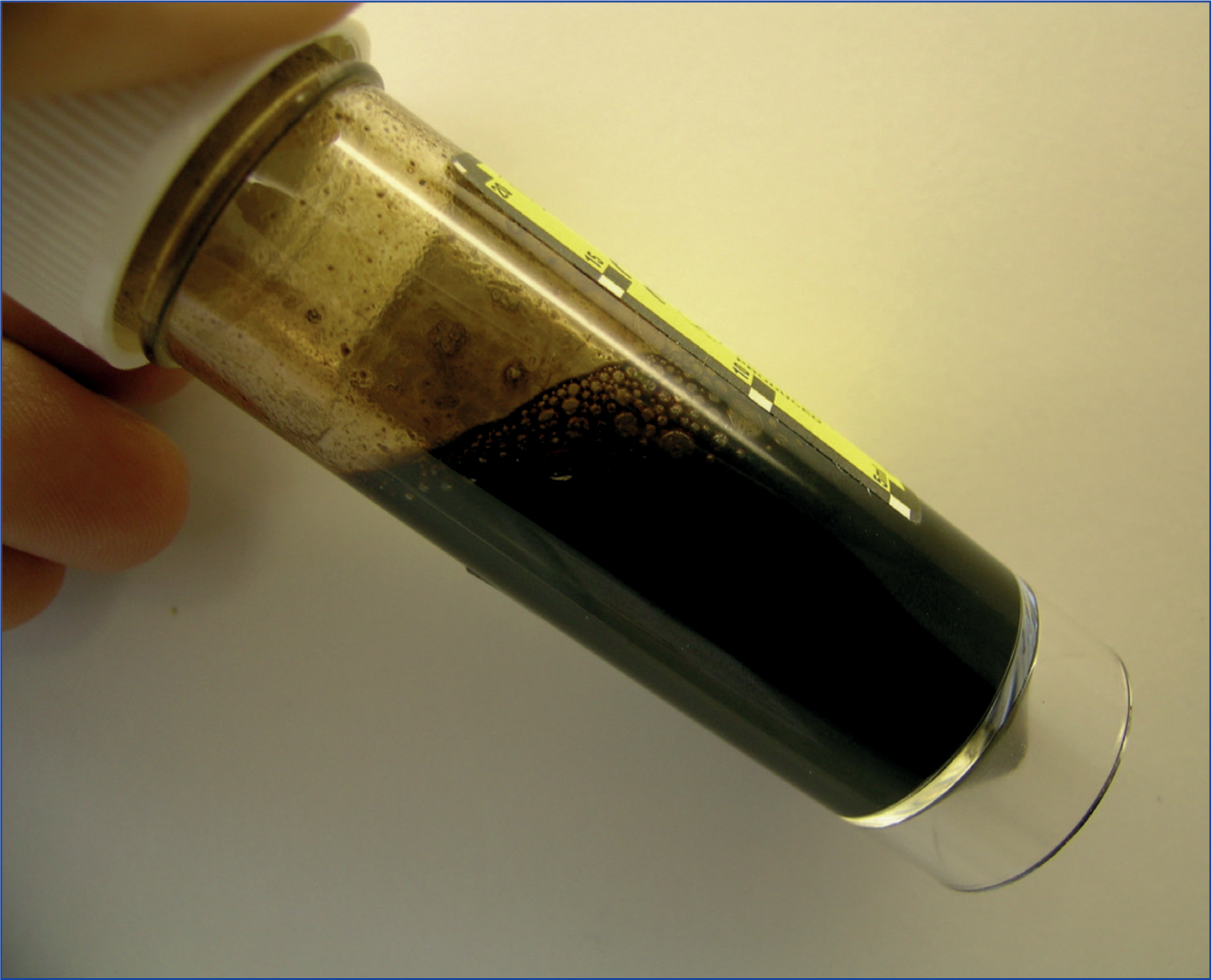
Zoonotic significance
Pets infected with tick-borne pathogens do not pose a direct risk to owners, but they may also be exposed to ticks and zoonotic disease. These include pathogens such as Rickettsia conorii carried by R. sanguineus and tick-borne encephalitis transmitted by Ixodes spp. ticks. Although it is unlikely that R. sanguineus would currently establish outdoor endemic populations in the UK, it can complete its life cycle in 3 months, which has allowed it to infest UK homes in a similar way to fleas (Hansford et al, 2015). Such infestations greatly increase the risk of zoonotic tick-borne disease transmission to people living in or visiting the house, as all R. sanguineus life stages will feed on humans. The discovery of a Hyalomma spp. nymph in the UK that may have over wintered (Hansford et al, 2019) has also emphasised the risk of exotic ticks capable of transmitting zoonotic disease establishing at least temporarily in the UK.
Prevention
Pets should be treated with an effective tick product before and during travel, as well as on entry to the UK. If travelling to L. infantum endemic countries, this product should be a licensed pyrethroid repellent. If travelling in Northern Europe then either an isoxazoline containing product (Bravecto®, MSD Animal Health; Bravecto® plus, MSD Animal Health; Credelio®, Elanco; Nexgard®, Boehringer Ingelheim Animal Health UK Ltd; Nexgard Spectra®, Boehringer Ingelheim Animal Health UK Ltd; Simparica®, Zoetis UK Ltd; or Stronghold Plus®, Zoetis UK Ltd) or pyrethroid can be selected. Products should be applied at least 1 week before travel and continued for at least one treatment after return. While isoxazoline and pyrethroid products are highly efficacious, they are not 100% effective so daily monitoring for ticks and careful removal with a tick hook should also be advised. Digital images of ticks are useful for subsequent identification. Pets should also be checked for ticks on return to the UK and any found sent to the Public Health Tick Surveillance scheme for identification. Tick nypmhs are very small (Figure 4), easily missed and capable of pathogen transmission however, so tick removal alone should not be relied on as a preventative strategy. If pets are going to be spending a long time in rural locations with tall grass, undergrowth or wildlife, or are travelling to highly endemic areas for ticks, the combination of an isoxazoline product and a pyrethroid product should be considered. These are safe to use in combination and will provide a double layer of protection. Precautions should also be taken by owners walking in rural areas such as wearing long sleeves and ensuring the lower body is covered with trousers tucked into boots. Pyrethroid washes for clothes or pre prepared pyrethroid impregnated clothes give long lasting repellency. Deet and citronella can also be used with some efficacy but are much shorter acting. The body should be carefully inspected for ticks after being outdoors and any ticks found removed.
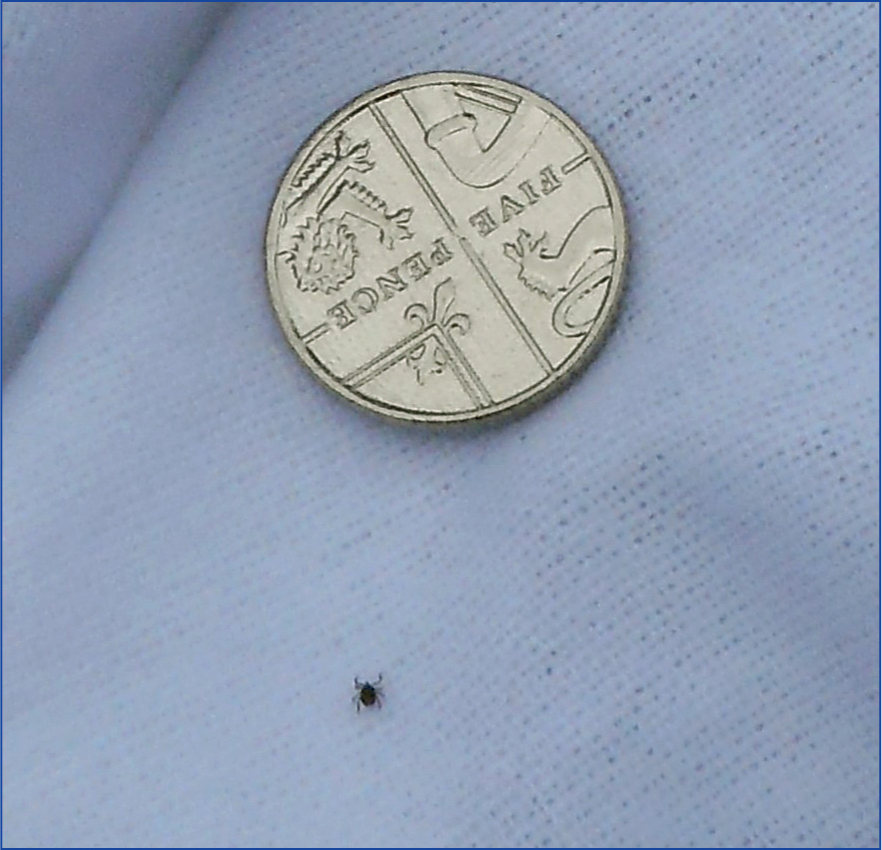
Other exotic parasites to consider when giving pet travel advice
Climate change and increased movement of pets and people are increasing the distribution of parasites previously uncommon or absent from mainland Europe. Examples are.
- Dirofilaria repens (Figure 5) — the mosquito vectors for D. repens are already endemic in the UK and D. repens appears to have less stringent temperature requirements for development than D. immitis and its distribution across Europe is widespread (Figure 2). This means that it is more likely to establish in the UK (Morgan, 2016). Definitive hosts are most commonly dogs although cats may also be infected. Prevalence of dirofilariosis in cats tends to be only one tenth of that in dogs and typically occurs in areas of high canine infection rates. Humans can also be infected through being exposed to mosquito bites. Transmission occurs in a similar manner to D. immitis but with adult worms living in skin nodules, subcutaneous tissues rather than the cardiovascular system. Infection can be subclinical or lead to dermatitis and skin nodules. Less commonly, adult worms migrate to the eyes of the host where they may be visible and may cause conjunctivitis. Moxidectin/imidacloprid spot on preparations are licensed preventative treatments and should be considered when dogs are travelling to endemic countries where D. immitis is not present and a routine macrocylic lactone preventative would not ordinarily be used.
- Thelazia callipaeda — T. callipaeda is a zoonotic vectorborne nematode which resides in the conjunctival sac of carnivores, rabbits and humans. The parasite is found widely in Asia and has been spreading through Europe in recent years. The vector in Europe is the fruit fly, Phortica variagata which transmits the parasite while feeding on lacrimal secretions. Although often subclinical, ocular thelaziosis can commonly cause conjunctivitis, keratitis, epiphora, eyelid oedema, corneal ulceration and, in serious cases, blindness. T. callipaeda was first reported in Europe in Italy and since 2007 autochthonous cases have spread east and northwards, being reported in France, Germany, Switzerland, Spain and Portugal, and more recently into Eastern Europe (Mihalca et al, 2015). Although in domestic pets, it is predominantly a parasite of dogs, clinical cases of ocular thelaziosis have also been reported in cats in many endemic countries (Mihalca et al, 2015). The P. variagata intermediate host has been widely reported in the UK, presenting the possibility for establishment of the parasite in these vector populations (Morgan, 2016). No product is licensed for prevention, but milbemycin oxime/praziquantel tablets and a moxidectin/imidacloprid spot on preparation (Advocate®, Bayer) have treatment licenses and therefore may have some efficacy in prevention of infection.
- Flukes and Linguatula serrata — dogs and cats visiting America, Africa and Asia may be infected with flukes living in the liver and intestines. This occurs through ingestion of raw or undercooked fish and seafood. Similarly, consumption of raw or undercooked offal in Eastern Europe or the Middle East may result in infection with the zoonotic nasal arthropod Linguatula serrata (Figure 6). The consumption of raw or undercooked meat, fish and offal either by deliberate feeding, scavenging or predation should be avoided.
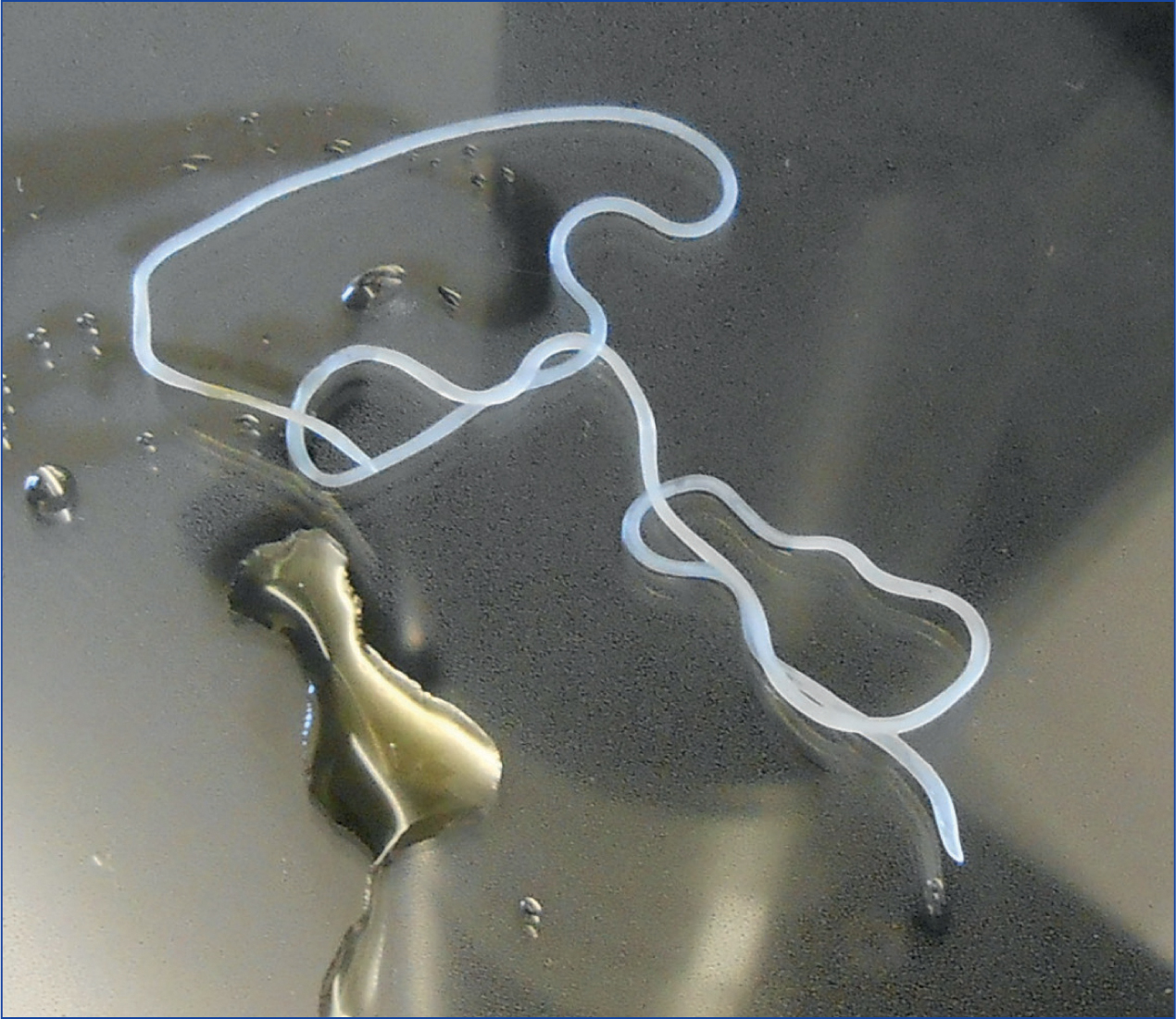
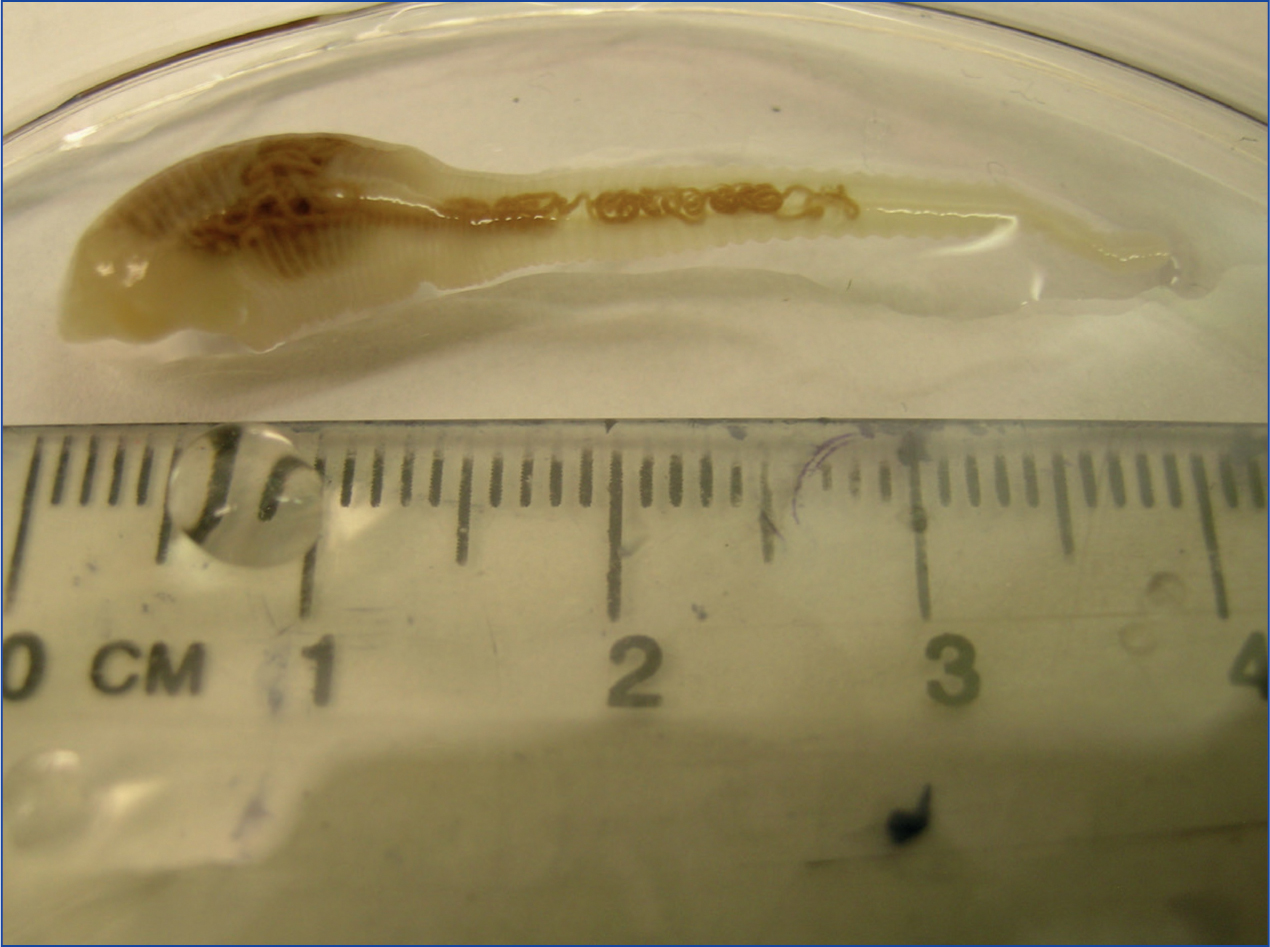
General considerations when giving pet travel advice
A consistent strategy is required to keep travelling pets and their owners safe from exotic parasitic disease. The following should always be considered
- Countries being visited — the parasites present in countries being visited need to be considered and preventative measures put in place. This includes countries being travelled through as well as the destination of travel.
- Lifestyle and compliance — frequent swimming and shampoo will affect the duration of efficacy of some products so data sheets need to be checked where this is a consideration. Owner preference and ability to apply different types of products such as tablets, spot on preparations and collars should also be considered.
- Use of products that protect against multiple parasites — to reduce the number of products that clients have to apply while on holiday. Fly repellent products will also be efficacious against ticks. Products are available combining heartworm and tapeworm prevention or heartworm and tick prevention where this is relevant and fits in with owner compliance and overall requirements.
Conclusions
Increased movement of pets and fluid vector and parasite distributions in Europe make protecting UK pets and owners from exotic diseases increasingly challenging. Nurses are in the frontline of giving accurate pet travel advice and maintaining biosecurity. It is important therefore for nurses to be prepared to give accurate travel advice to clients and remain up to date with the latest parasite distributions in Europe. In doing so, pet and human health will benefit and the risk of entry of novel parasites into the UK can be reduced.
For further information on the travelling pet visit the ESCCAP UK & Ireland website (https://www.esccapuk.org.uk/) where queries can also be submitted about any aspect of parasite prevention.
KEY POINTS
- Pet travel is increasing year on year at a time of increased parasite and vector distributions across Europe and the wider world.
- This is increasing both human and pet health risks while abroad, and the risk of exotic vector and parasite establishment in the UK.
- Accurate parasite control advice while abroad is key to keep pets and owners safe, while helping to protect UK biosecurity.
- Veterinary nurses play a vital role in giving accurate and effective parasite prevention advice for clients taking their pets abroad.


